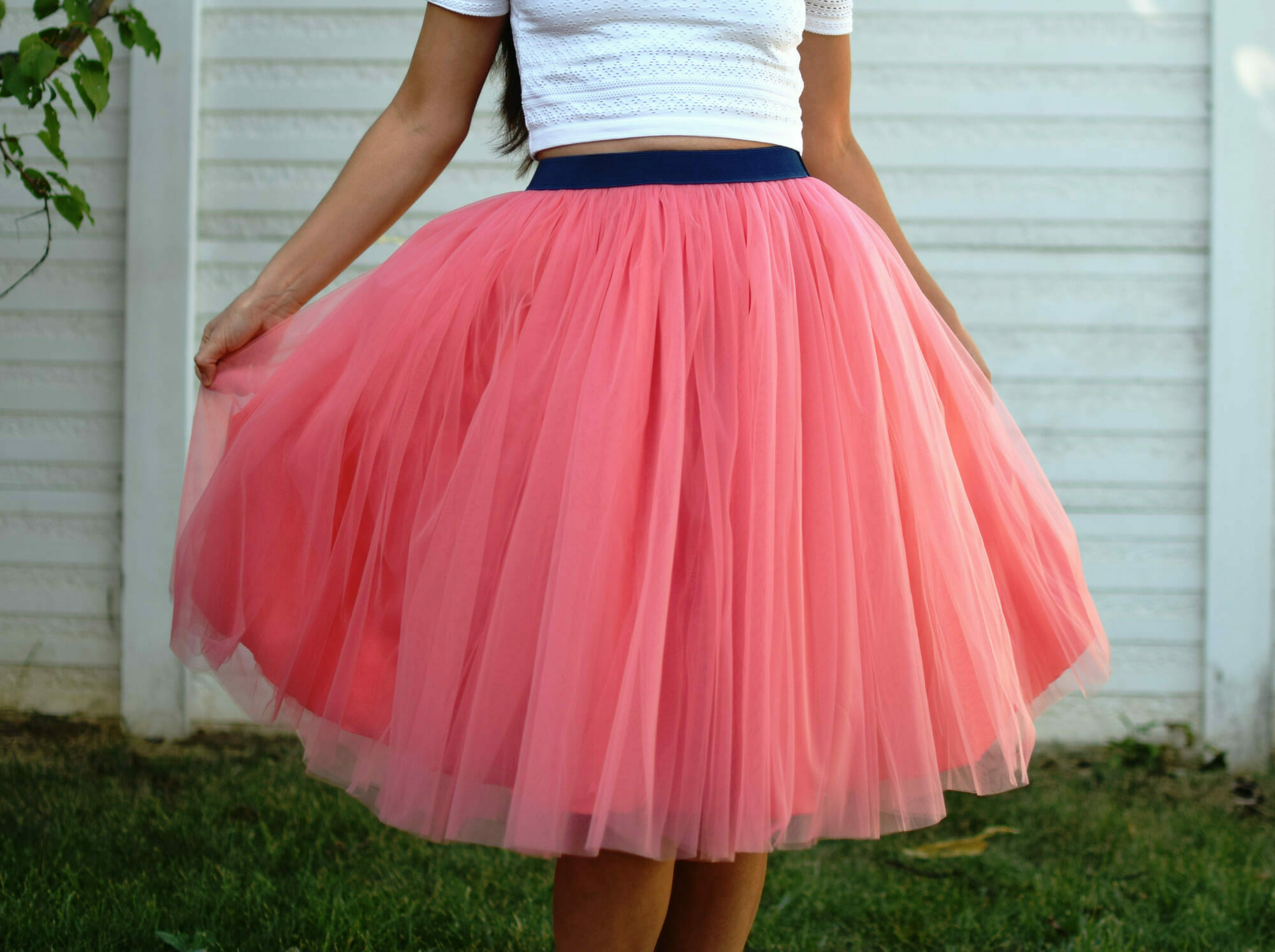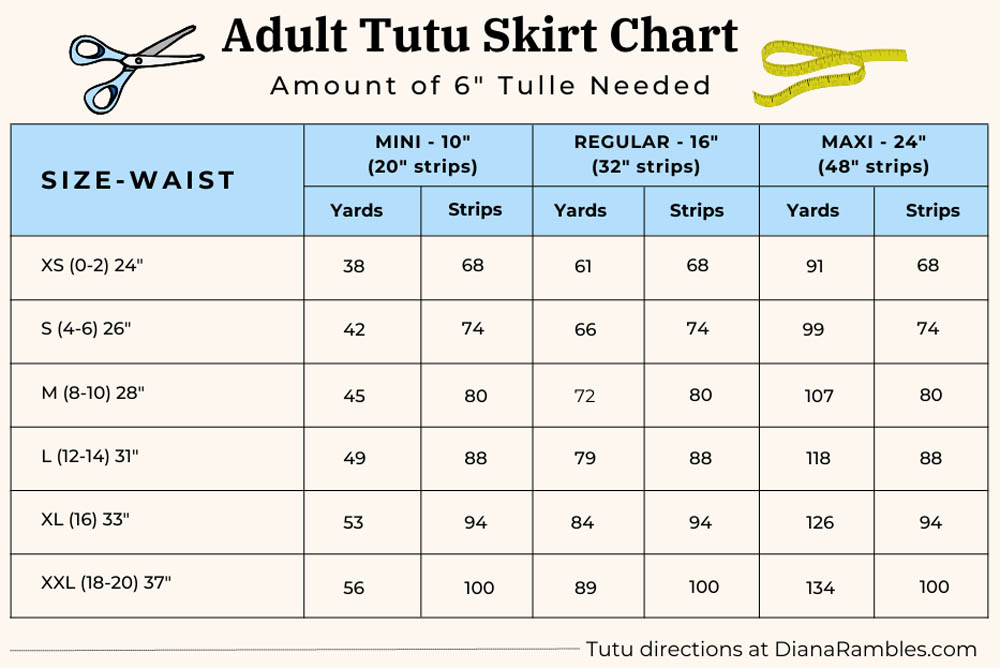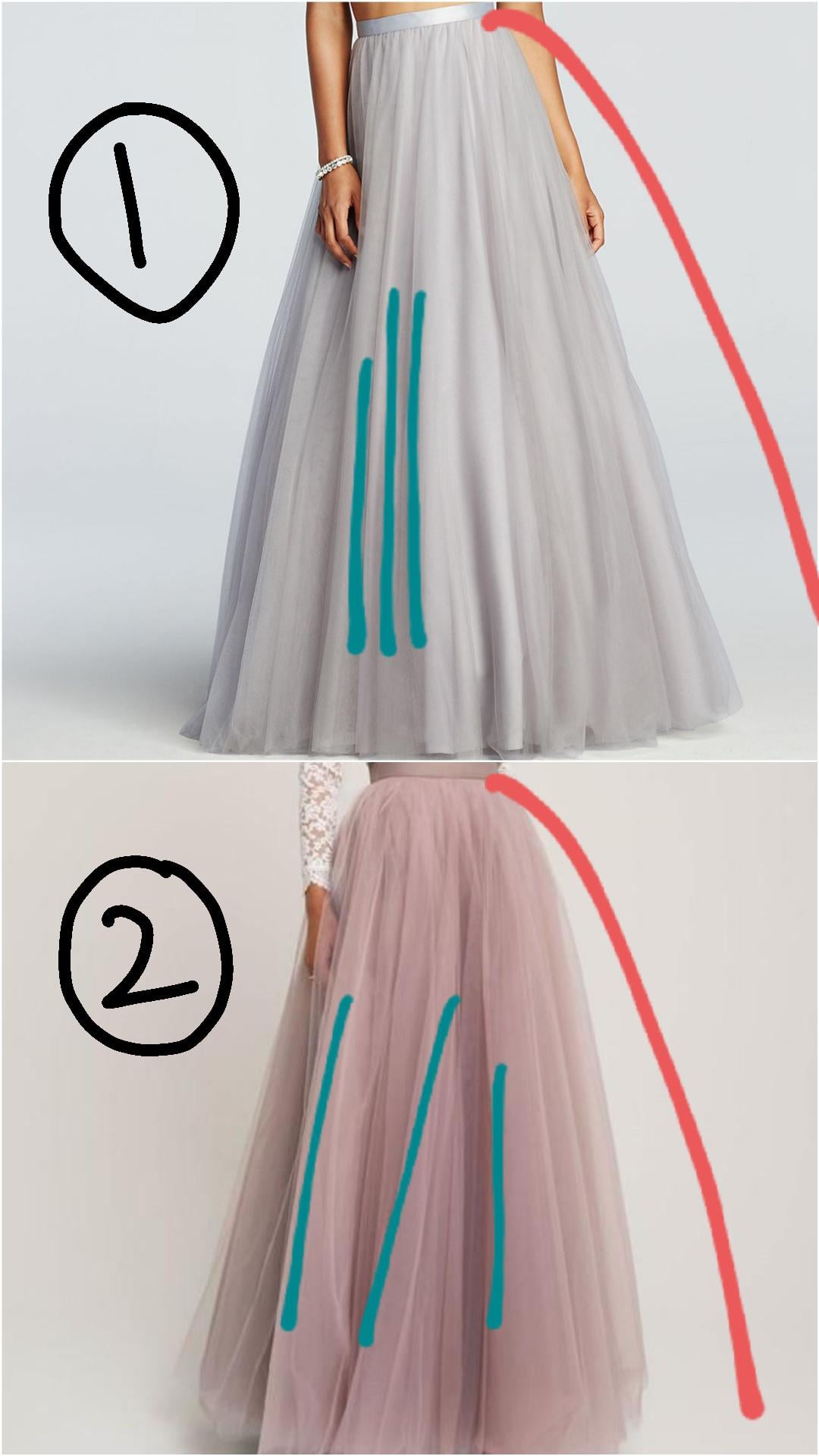For an adult skirt, you typically need 4 to 8 yards of tulle. Children’s skirts require around 2 to 4 yards.
Tulle is a versatile fabric, perfect for creating lightweight, airy skirts. It is popular for making tutu skirts, wedding dresses, and costumes. The amount of tulle required depends on the skirt’s length, fullness, and the wearer’s size. For a fuller skirt, more tulle is needed.
Measuring accurately ensures you purchase the right amount of fabric. Tulle is available in various colors and finishes, allowing for creative flexibility. Understanding your project requirements will help you choose the right amount and type of tulle. This guide will help you make an informed decision for your tulle skirt project.
Introduction To Tulle Skirts
Tulle skirts are a popular choice for their light and airy feel. They are made from tulle fabric, which is known for its sheer and delicate appearance. These skirts are perfect for various occasions, from casual outings to formal events. Understanding how much tulle you need is crucial for creating the perfect skirt.
Why Choose Tulle
Tulle is a versatile fabric used in many fashion items. It adds volume without weight, making it perfect for skirts. Here are some reasons to choose tulle:
- Lightweight and comfortable to wear.
- Available in various colors and patterns.
- Easy to work with for DIY projects.
- Perfect for layering, adding a magical touch.
Types Of Tulle Fabric
Not all tulle is created equal. Different types of tulle offer unique textures and appearances. Below are some common types:
| Type | Description |
|---|---|
| Silk Tulle | Soft and luxurious, ideal for high-end garments. |
| Nylon Tulle | Durable and affordable, perfect for everyday wear. |
| Polyester Tulle | Stiffer, great for creating volume and structure. |
| Stretch Tulle | Elastic, providing flexibility and comfort. |
Choosing the right type of tulle is essential for your skirt. Consider the occasion and desired look. Whether you need a soft flow or a structured design, there’s a tulle for you.
Credit: www.quora.com
Factors Influencing Yardage
Understanding the factors influencing yardage for a tulle skirt is crucial. This helps in buying the right amount of fabric. Let’s explore these factors in detail.
Skirt Length
The length of the skirt is a primary factor. A longer skirt requires more tulle. To make a floor-length skirt, you will need extra yards of fabric. For a knee-length skirt, less tulle is required. Measure from the waist to the desired length. Add extra inches for hemming and adjustments.
| Skirt Length | Yards of Tulle |
|---|---|
| Mini | 2-3 yards |
| Knee-length | 4-5 yards |
| Floor-length | 6-9 yards |
Skirt Fullness
Skirt fullness affects the amount of tulle needed. A fuller skirt looks more voluminous. This requires more fabric. For a puffy skirt, you may need up to 10 yards. For a less full skirt, fewer yards are required. Consider the style you want before buying tulle.
- Very Full: Up to 10 yards
- Moderately Full: 6-8 yards
- Less Full: 4-5 yards
These factors help you decide how many yards of tulle to purchase. Make sure to measure accurately and consider your skirt’s fullness and length.
Measuring For A Tulle Skirt
Measuring for a tulle skirt is essential for a perfect fit. Accurate measurements ensure your skirt looks stunning and fits comfortably. Below, we’ll guide you through the key steps: taking waist and length measurements.
Waist Measurement
Your waist measurement is crucial for a well-fitting skirt. Follow these steps:
- Find the narrowest part of your waist.
- Use a flexible measuring tape.
- Wrap the tape snugly around your waist.
- Make sure the tape is parallel to the floor.
- Record the measurement in inches or centimeters.
Ensure the tape measure isn’t too tight or too loose. Comfort is key for a tulle skirt.
Length Measurement
The length of your skirt depends on your preference. Decide how long you want your skirt to be:
- Mini Skirt: Above the knee.
- Midi Skirt: Below the knee to mid-calf.
- Maxi Skirt: Ankle length.
Steps to measure skirt length:
- Start from your waistline.
- Measure down to your desired length.
- Record the measurement in inches or centimeters.
Consider adding an extra inch for seam allowance. This ensures the final skirt length meets your expectations.

Credit: icansewthis.com
Calculating Yardage
Are you planning to make a beautiful tulle skirt? Knowing how much tulle you need is crucial. This section will help you calculate the yardage for your skirt. Follow these simple steps to ensure you have enough tulle for your project.
Basic Formula
First, measure your waist circumference. Then, decide on the length of the skirt. For a basic tulle skirt, use this formula:
(Waist Circumference + Skirt Length) x 2 = Total Yards of Tulle
For example, if your waist is 30 inches and you want a 20-inch skirt:
(30 + 20) x 2 = 100 inches
Convert inches to yards by dividing by 36:
100 inches / 36 = 2.78 yards
Adjustments For Fullness
Do you want a fuller skirt? Adjust the yardage accordingly. Here are some guidelines:
- For a moderate fullness, multiply the total yards by 1.5.
- For an extra full skirt, multiply by 2.
Using the previous example, for moderate fullness:
2.78 yards x 1.5 = 4.17 yards
And for extra fullness:
2.78 yards x 2 = 5.56 yards
Round up to the nearest yard for best results.
Now you know how to calculate the yardage for your tulle skirt. Happy sewing!
Buying The Right Amount
Knowing how many yards of tulle you need is crucial. It ensures you have enough fabric for your skirt. Use the right calculations to avoid wastage.
Single Layer Skirts
A single-layer tulle skirt is light and airy. Here’s a simple guide:
| Skirt Length (inches) | Yards of Tulle |
|---|---|
| 15 inches | 2 yards |
| 20 inches | 3 yards |
| 25 inches | 4 yards |
Measure the waist and desired length. For a knee-length skirt, 2 to 3 yards are enough. For a longer skirt, use more fabric.
Multi-layer Skirts
Multi-layer skirts are fluffier and more voluminous. They require more tulle.
Follow these steps:
- Decide the number of layers.
- Measure the waist and desired length.
- Multiply the single-layer yardage by the number of layers.
For a three-layer skirt:
- 15-inch skirt needs 6 yards (2 yards per layer).
- 20-inch skirt needs 9 yards (3 yards per layer).
- 25-inch skirt needs 12 yards (4 yards per layer).
More layers need more tulle. Calculate carefully to ensure you have enough.
Additional Considerations
When calculating how many yards of tulle you need for a skirt, there are several additional considerations to keep in mind. These factors can affect your final measurements and ensure you get the perfect amount of tulle for your project.
Width Of Tulle
Tulle comes in different widths, usually ranging from 54 inches to 108 inches. The width of the tulle will impact how much fabric you need. If you use wider tulle, you may need fewer yards. Conversely, narrower tulle might require more yards to achieve the same fullness.
Example: For a full skirt, using 54-inch wide tulle, you might need 6 yards. If you use 108-inch wide tulle, you might only need 3 yards.
Shrinkage And Waste
Tulle is a delicate fabric and may shrink slightly after washing. Always account for potential shrinkage by adding extra yards to your initial measurement. Additionally, there may be some fabric waste due to cutting and shaping the tulle to fit your design.
- Add extra yards to account for shrinkage.
- Consider fabric waste when planning your purchase.
By considering these factors, you can ensure you have enough tulle to complete your skirt without any issues.
Tips For Cutting Tulle
Cutting tulle can be a tricky task. But with the right techniques, you can achieve clean and precise cuts. This section will guide you through some essential tips for cutting tulle, ensuring your skirt project looks professional and polished.
Using A Rotary Cutter
A rotary cutter is an excellent tool for cutting tulle. It allows for clean, straight lines and reduces the risk of fraying. Here are some steps to follow:
- Lay your tulle flat on a cutting mat.
- Use a ruler to measure the desired length.
- Hold the ruler firmly in place.
- Run the rotary cutter along the edge of the ruler.
Make sure to use a sharp blade. A dull blade can snag the fabric.
Avoiding Fraying
Tulle is prone to fraying, but you can prevent this with some simple techniques:
- Use sharp scissors for manual cuts.
- Opt for a rotary cutter to make clean cuts.
- Seal edges with a fabric sealant or clear nail polish.
- Consider using a serger for a finished edge.
These methods help maintain the integrity of your tulle, ensuring a neat and professional finish.

Credit: dianarambles.com
Conclusion And Final Thoughts
Creating a tulle skirt can be a fun and rewarding DIY project. Knowing the right amount of tulle to use is crucial. This guide helps you understand how many yards of tulle are needed for your skirt.
Summarizing Key Points
- Measurements: Always measure your waist and the desired length of the skirt.
- Types of Tulle: Different types of tulle can affect the volume and flow of your skirt.
- Yardage Calculation: Use the formula
(waist measurement x desired length) / 36to estimate yardage. - Layers: More layers add volume. Plan accordingly.
- Project Size: A child’s skirt needs less tulle than an adult’s skirt.
Encouragement For Diy Projects
Starting a DIY project can be intimidating. Remember, practice makes perfect. Here are some tips to boost your confidence:
- Start Small: Begin with a simple project like a child’s tulle skirt.
- Gather Materials: Make sure you have all needed materials before starting.
- Take Your Time: Don’t rush. Enjoy the process.
- Ask for Help: Join online forums or groups for advice and tips.
- Celebrate: Be proud of your creation, no matter how it turns out.
Remember, each project is a learning experience. The more you practice, the better you’ll get. Happy sewing!
Conclusion
Finding the right amount of tulle for your skirt is essential. Measure your waist and desired skirt length accurately. Consider the fullness you want for the perfect look. With these tips, you can create a beautiful tulle skirt effortlessly. Happy crafting!




Leave a Reply